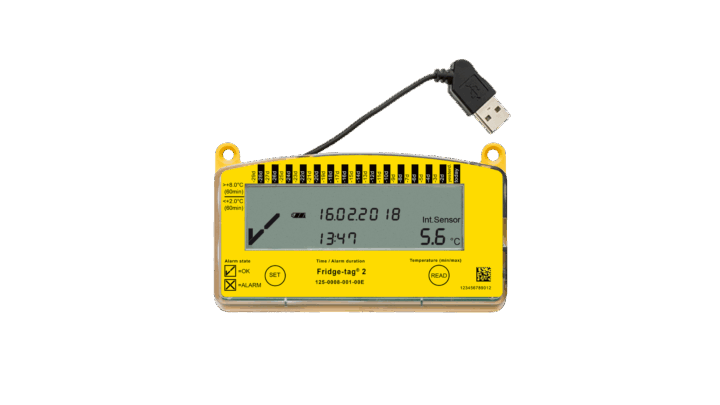
Core DHIS2 for Logistics use cases and features
On this page we present some common eLMIS use cases supported by DHIS2-LMIS, as well as cross-cutting DHIS2 platform features and functionalities
Jump to a section on this page
Guided Tutorial
In the short guided tutorial below, you can explore some of the key features in DHIS2 for Logistics. If the tutorial doesn’t load correctly on this page, you can also view it here.
Stock Reporting (Aggregate)
End-user stock management: Monthly reporting of stock on hand, stock receipts, stock issues and discarded stocks as well as stockout days and stock losses as performance management indicators and providing full visibility of logistics data to upstream logistics services. This use case is ideal for health facilities with low stock transactions managed by health workers, since the stock data can be reported within the same DHIS2 environment as regular health data. This is a cost-effective and efficient way of digitizing last-mile stock data without the need for additional devices, licensing, training and other costs related to implementing a dedicated LMIS tool.
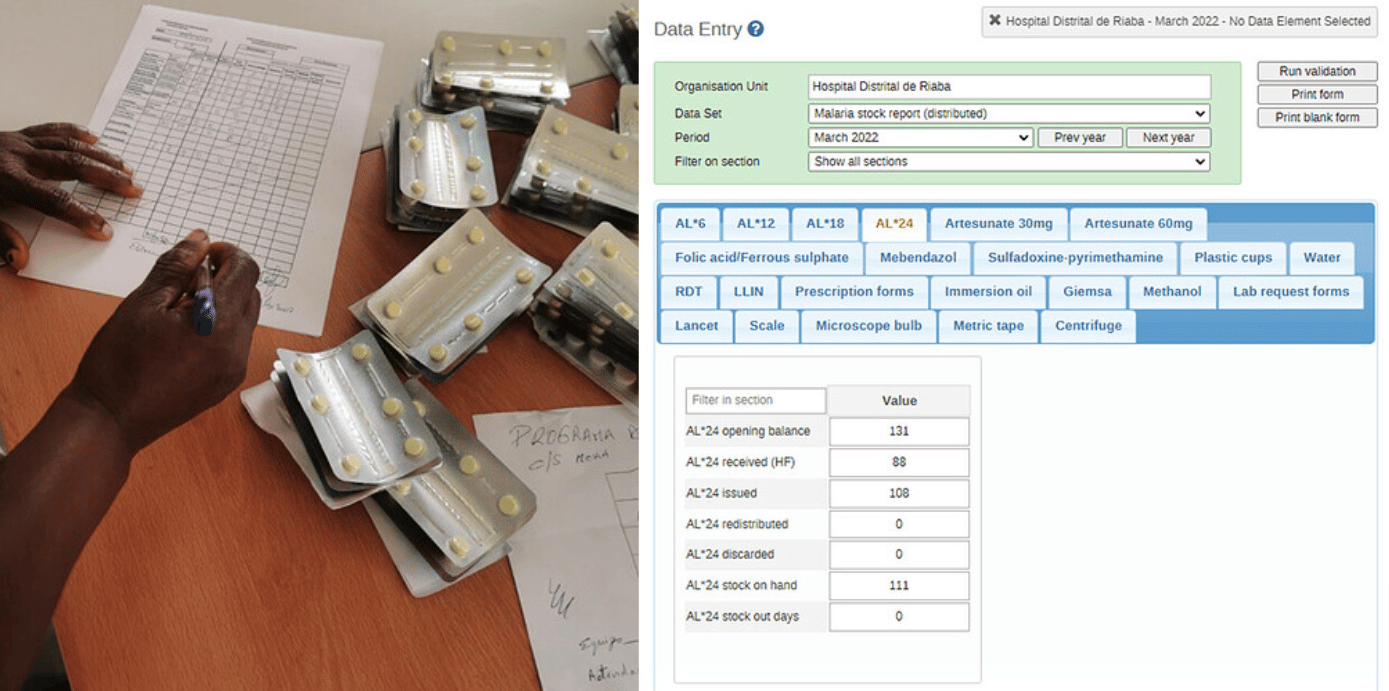
Real-time Stock Management (Tracker)
Real-time stock management system (RTS): A paperless stock management system where storekeepers only scan the barcodes of healthcare products and record quantities when issuing stock. DHIS2 provides updated stock information in real-time and automatically generates daily and monthly reports. This solution is optimized for use on mobile devices through the DHIS2 Android Capture app, which supports data collection in both offline and online modes. It shares many of the same benefits as the Stock Reporting use case above for health systems using Tracker at facility level, integrating stock management into the DHIS2 solution already used by health workers. In addition, it provides real time stock data for decision making, alerting managers of low stocks, over stock and providing a general overview of stock levels across facilities in a district or region to facilitate stock sharing and redistribution.
The DHIS2 RTS module for Android mobile devices was developed through contributions from ICRC.

Equipment Life Cycle Management (Tracker)
Management of cold chain or biomedical equipment from installation to decommissioning and other activities during the equipment life cycle. Configurable stages adapted to the equipment requirements, such as logging alerts, temperature data, maintenance requests, repairs and more. CCE management complies with the GS1 DataMatrix code standard. “Equipment Monitoring Devices for Equipment Monitoring Systems” (WHO/PQS/E006/EM01.1, PQS performance specification). This Tracker Program is aligned with the WHO EMS specifications which will allow storing, analyzing and visualizing temperature and appliance data as well as alerts from EMS compliant cold chain appliance directly in DHIS2.
Stock & Equipment Analytics
Monitoring stock levels & sharing stocks: Identify facilities which are understocked, stocked out or overstocked and, based on stock levels and average demand, use DHIS2 to analyze, plan and coordinate redistribution and sharing of excess stocks. The analytics are highly customizable and can be developed with country teams to meet specific and evolving requirements. They are also available to all users with access to the platform, allowing those at the last-mile to interact with the data they are collecting/reporting.
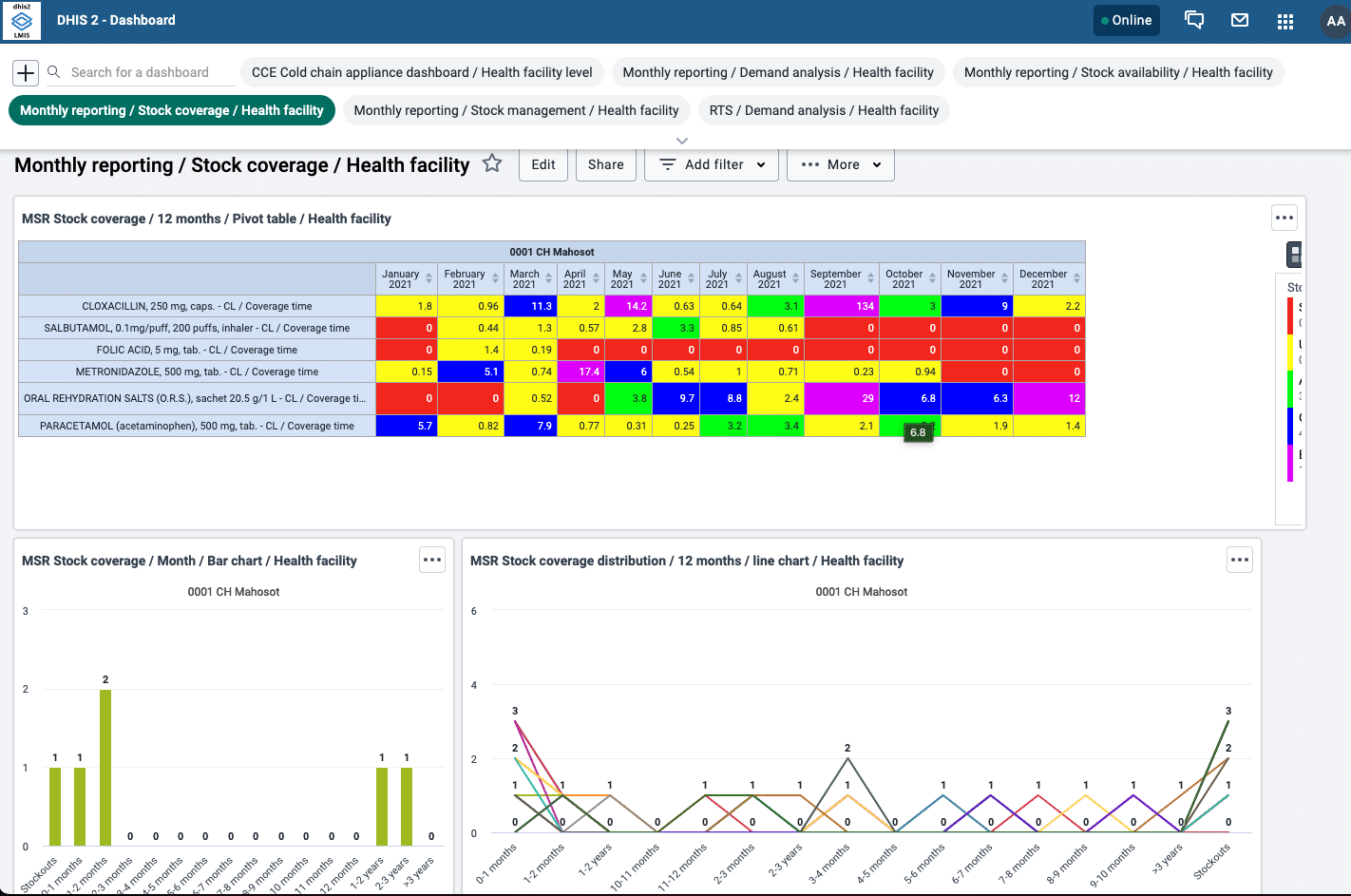
Health Care Product Catalog (Tracker)
Providing health facilities with basic information, including images, of commonly used health care products which can be updated from upstream national eLMIS systems. This allows the user at the facility to see technical specifications for products available in their facility, aligned with the central eLMIS or ERP tool.
Temperature monitoring
Twice-daily digital recording of temperatures for cold chain equipment as well as environmental monitoring of medical stocks and exploring the possibility of connecting temperature data loggers to DHIS2 for automatic recording.
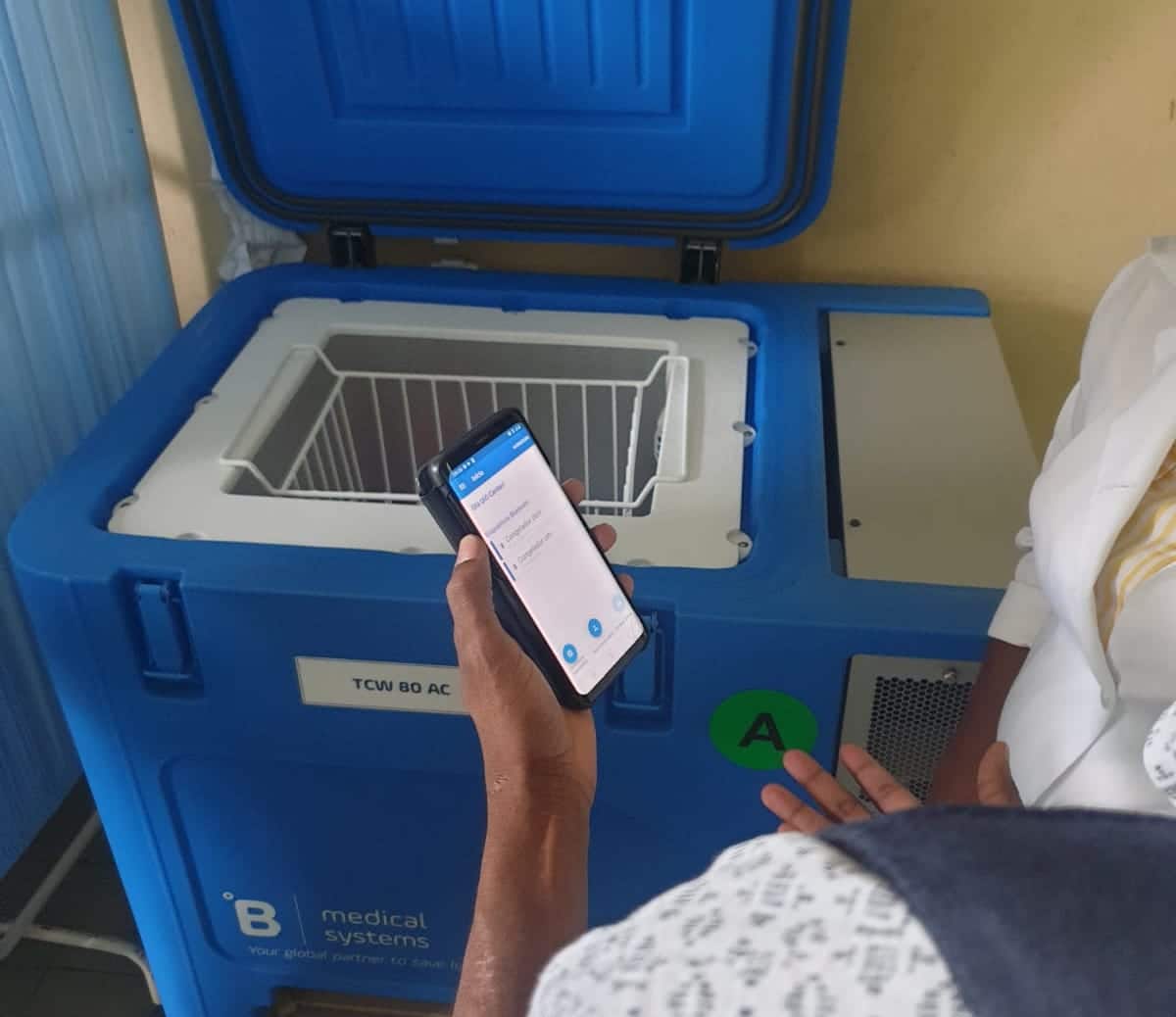
DHIS2 & Berlinger device compatibility
Fridge-tags, Q-tags and SmartSystem by Berlinger are all “validated compatible” with the DHIS2 platform. This confirms that these solutions can easily be integrated, allowing temperature data to be integrated with the DHIS2 system to provide analytics and insights for users for cold chain equipment monitoring. This integration meets the WHO EMS standard.
A pilot of this approach, using the OpenFN interoperability layer, is being developed and piloted in Nigeria.
Compatible items by Berlinger:


Q-tag
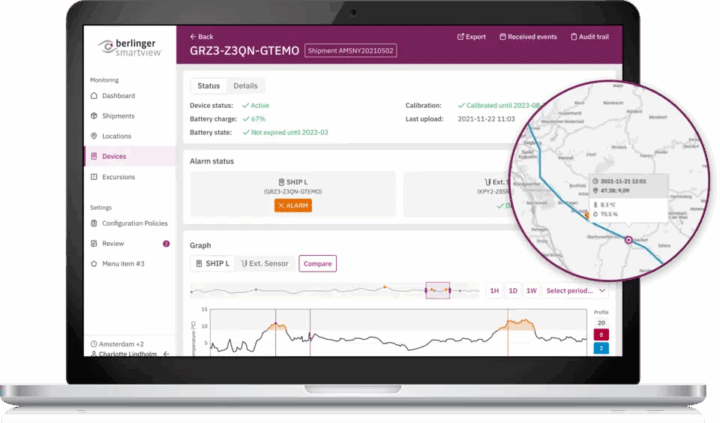
SmartSystem (RTM)
Integration with national eLMIS or ERP
In addition to its own eLMIS features, DHIS2 is designed to allow integration with other software applications. This makes it possible to combine the flexibility and simplicity of DHIS2 for end-users with the sophisticated functionality of purpose-built, full-scale eLMISs or even Enterprise Resource Planning (ERP) systems that cover the entire scope of logistics and supply chain management. (link to integration page). Through this integration approach, the DHIS2-LMIS features contribute to end-to-end supply chain visibility, a TSS version 2 requirement.
Core DHIS2 functionalities that support logistics use cases
The DHIS2 platform provides a number of applications, features, and tools that can enable and support logistics and stock management information systems:
Integration
Connecting last mile stock data with a central eLMIS or ERP to informed forecasting and demand planning. This allows for end to end visibility of the national public health supply chain and reduces the impact of demand distortion within the distribution network. Learn more
Data Warehouse & Triangulation
A national DHIS2 system can host data from a variety of sources, allowing program managers to carry out composite analysis between HMIS and LMIS systems in one place using customizable dashboards. For example, comparing caseloads with demand for medical supplies and the number of treated patients with available stocks.
Indicators
DHIS2 supports use of complex indicators so you can calculate average demand, closing balances, stock status (coverage time), stock-out days, stock losses, among other key indicators, and forecast stock levels and future demand.
Web & Mobile Offline Data Entry
Both Aggregate and Tracker data can be captured using the DHIS2 Capture app for web and the DHIS2 Android Capture app for mobile devices, including in offline mode for areas with limited or intermittent internet access.
Barcode & QR Code Scanning
DHIS2 can capture and render data in QR and barcode format — including via smartphone or tablet PCs with the DHIS2 Android Capture app — greatly facilitating the entry and selection of item codes and descriptions.
Bottleneck & Root Cause Analysis
Link health outcomes and clinical service delivery specifically with logistics services and performance for identifying any logistical shortcomings and inefficiencies using apps developed by the HISP network available through the DHIS2 App Hub.